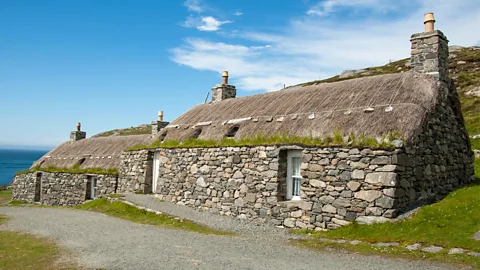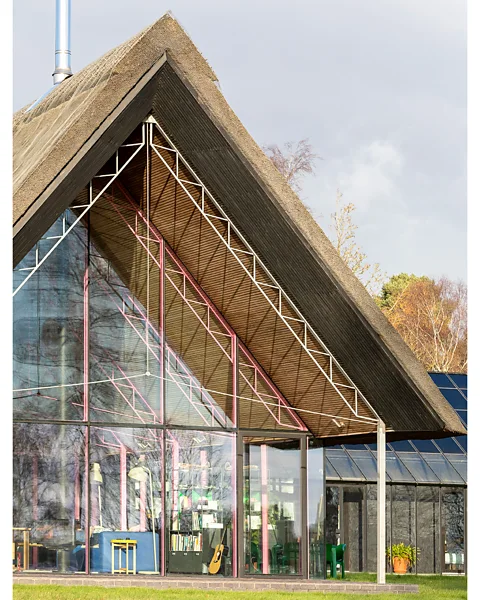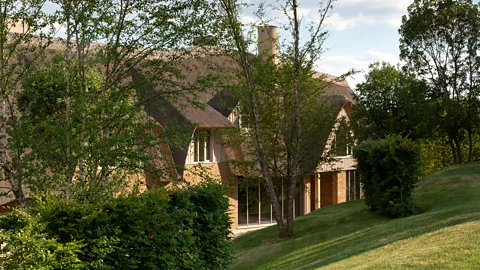 Alamy
AlamyBlackhouse thatched cottage in the Hebrides, Scotland
Many thatched cottages in the Hebrides are simple, single-storey structures called blackhouses or taigh-dubh (their name in Gaelic). The term blackhouse probably derives from the fact that these cottages originally had no windows. This type of cottage has 3ft-to-6ft (1m-to-2m) stone walls to help it withstand severe Atlantic storms. Wood here is in short supply and only used for roof timbers. The buildings’ rooves normally have a turf base covered with thatch. These layers are traditionally stripped off in June and used as manure to cover local crops.
 Peter Landers Photography
Peter Landers PhotographyThatched building at Abigail Hopkins and Amir Sanei’s home in Suffolk
Architects Hopkins and Sanei designed their contemporary family home, Housestead, as a set of separate structures, each serving an individual function. The living room, housed in one, has a clean-lined thatched roof and boasts bubblegum-pink steel columns, adding a bold, playful touch. The building that houses their living room “captures the spirit of cosy culture as I see it”, says Hopkins. “I think cosy culture resonates so widely because it speaks to a universal need for warmth, comfort and togetherness in contrast to the uncertainties of the world today. Whether found in Wales, Scotland or Norway, where it’s called koselig, this tradition captures the same instinct to create protective yet inviting spaces that celebrate simple pleasures.
“In an increasingly fast-paced, digital world, this idea of sanctuary and shared experience feels rooted and enduring. Our living area is a warm, light-filled place that feels both sheltered and open, allowing you to watch winter rain lash against the glass while you remain cocooned in comfort yet immersed in nature.”
 Gilbert McCarragher
Gilbert McCarragherOxfordshire thatched house by Richard Parr Associates
This is another example of a contemporary treatment of a thatched home. Made using materials such as English oak, stone and thatch, it was designed to complement its rural setting. British thatched roofs often have very ornate ridges but, in this case, Parr has designed one with sharp, modern lines. He sees thatching as malleable and flexible, and likens it to hair that can be cut in any number of styles. “In our buildings we use thatch as a contemporary roofing solution,” he says. “While we might face planning restrictions, we’re using this material in exciting ways that also go beyond superficial aesthetics. So far we have received no resistance from planning authorities. There is a freedom to innovate with the material.”
—
If you liked this story, sign up for The Essential List newsletter – a handpicked selection of features, videos and can’t-miss news, delivered to your inbox twice a week.
For more Culture stories from the BBC, follow us on Facebook and Instagram.


